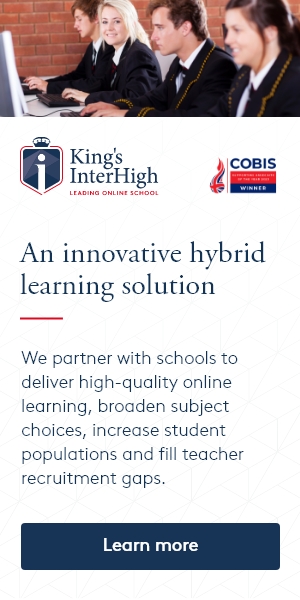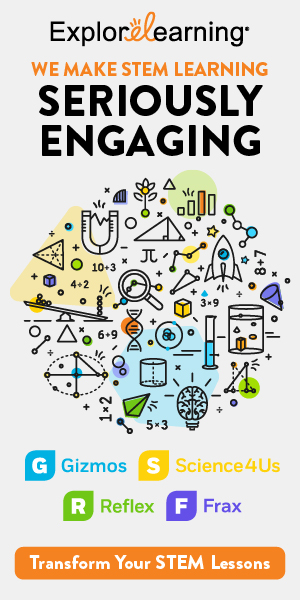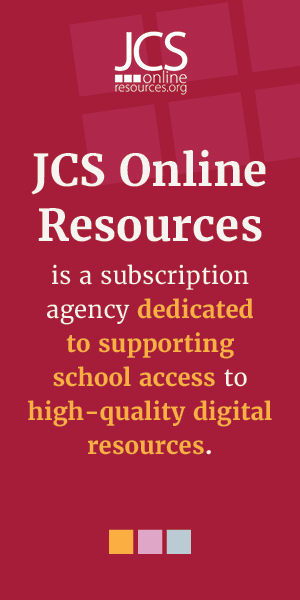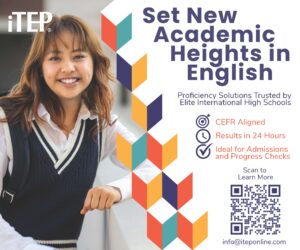By Matthew Wemyss
Imagine walking into a classroom where an artificially intelligent tutor provides individualised instruction to each student. Where a virtual assistant instantly answers questions, summarises passages of text and offers writing suggestions. And where algorithms analyse reams of data to flag students at risk of falling behind.
This vision of an AI-powered classroom is closer than you may think, but is it what we want?
It’s understandable that some companies peddle ‘the future of education’ as one where instructors fade behind flashy tech. But we know better about what inspires engagement. What if those sleek AI platforms really manifest as students isolated behind screens, bonding with bots while teachers focus on troubleshooting?
As leaders, we must hold firm that classrooms should never neglect nurturing students’ spirits via human connection.
The creative potential in collaboration
Yet refusing innovation outright rarely serves learners well either. The solution lies not in rejecting AI but in directing its power collaboratively. Implemented ethically, AI can amplify teachers’ superpowers. As one computer science educator shared, “I tried a lesson that didn’t really connect with this year’s students. ChatGPT suggested some engaging activities that the students really enjoyed and remembered.”
This is AI properly positioned: fuelling educators’ imaginative instincts rather than replacing them. Similar to other classroom tools, from tablets to textbooks, the difference lies in the intent and integrity of use.
“The solution lies not in rejecting AI but in directing its power collaboratively.”
Establishing guardrails for student AI use
When introducing any emerging technology, acting with ethical foresight is imperative – especially when students are involved. AI offers immense academic promise, but there are risks if deployed irresponsibly. As leaders, we must craft appropriate guardrails to pre-empt potential perils.
At my school, over 99% of current AI adoption is by teachers and staff for curriculum design and administrative tasks. But for the small-scale student use we have initiated, two pathways emerged.
Teacher-mediated use
In this model, students indirectly interact with AI platforms. Students propose queries or prompts, teachers submit these to the AI, vet the outputs and facilitate reflective classroom dialogue about the quality of responses. This maintains both ethics and security while building AI literacy. As an example, when image generators default to stereotypical representations like white male doctors, teachers guide constructive critique.
Custom-built chatbots
For direct student interaction with AI, our teachers are developing narrowly focused chatbots for engaging educational activities, ranging from interactive discussions with historical figures to scientific explorations like interviewing plant cells.
It is important to prevent the misuse of AI, such as students ‘co-opting a bot’ for purposes like having a plant cell write an English essay. It’s vital that our chatbots are not only age-appropriate but also adhere to our curriculum. Balancing creativity with constraints is an essential skill we’re nurturing through professional development.
Our initial steps into AI include user-friendly applications like chatbots for plant cell interviews or discussions with Marley’s ghost to explore the ambience in A Christmas Carol. This allows teachers to integrate AI technology into their existing lesson plans in a controlled and relevant manner.
Charting your AI course
The perfect formula for ushering AI into a school is still elusive. The landscape of AI tools is constantly shifting, and each school community will have its own distinct aspirations and apprehensions surrounding AI.
To navigate this, I advocate for a collaborative approach: actively seeking input from students, staff and parents. Their insights on AI’s potential roles and impacts can be invaluable. Let these collective voices shape your AI strategies and goals.
Building a dedicated team of staff members willing to explore and experiment with AI is essential. Start with small-scale trials, using AI to assist in lesson planning and other educational tasks like automated feedback. As these initial experiments gain traction and confidence grows within the team, gradually expand the scope of AI use.
In my role, I’ve engaged with each head of department to identify their workload challenges and evaluate how AI might offer support. Through these discussions, we’ve pinpointed specific areas where AI can be beneficial, and equally important, where it may not be suitable. It’s crucial to recognise that AI’s effectiveness can vary greatly depending on the context. In some instances, we’ve embraced AI only to later step back, particularly when it seemed to diminish our connection with students or colleagues.
Overview of practical tips for school leaders on implementing AI:
- Begin with collaborative planning: involve teachers, staff, students and parents in discussions about AI implementation. Their insights can guide a more effective and inclusive AI strategy.
- Start small and scale gradually: initiate AI integration with low-stakes applications, like AI-assisted lesson planning or chatbots for specific educational tasks. Monitor effectiveness and expand usage as confidence builds.
- Focus on professional development: provide training for teachers and staff on AI usage and ethical considerations. This ensures responsible and effective use of AI tools in the school environment.
- Set clear ethical guidelines: develop and enforce guidelines focusing on the ethical use of AI, including data security, student privacy and avoiding reliance on AI at the cost of human interaction.
- Use AI to enhance, not replace: emphasise that AI is a tool to augment educational practices, not a replacement for teachers. It should be used to enrich learning experiences and support teachers, not diminish their role.
- Evaluate and adjust regularly: regularly assess the impact of AI on students’ learning and teachers’ workload. Be ready to adjust or pause AI initiatives based on feedback and observed outcomes.
- Place people first: as we embrace AI in our schools, let’s do so with both enthusiasm and caution, with an eye towards innovation and a heart firmly rooted in the timeless values of education. Together, we can chart a course that places people first, leveraging AI as a collaborative tool that empowers, rather than undermines, the human spirit in education.

Matthew Wemyss is the Assistant School Director at Cambridge School of Bucharest and a passionate advocate of AI in education. You can connect with Matthew of LinkedIn or through his website.





